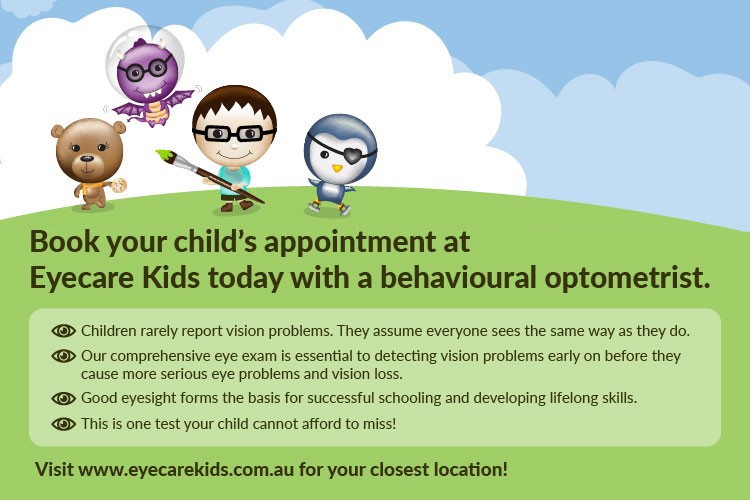We often get kids who after having their eyes checked have a significant prescription, meaning their corrective lenses are of a high power. If the parents don’t get the right advise, your child could end up with a pair of spectacles that are not only heavy and uncomfortable to wear but also makes them very self-conscious.
We understand that parents may choose glasses based on advertised prices, but here are some reasons why you should stop yourself from looking at glossy advertising and speak to an optical dispensing expert who will take the time to explain the differences in lenses. Just like any other product, a lens is NOT just a lens. You’ve taken the time to research before buying that stroller or that baby car seat… so before you purchase based on price, make sure you know you are choosing the best option for your child!
Our dispensers know that buying your child’s first pair spectacles can be overwhelming, especially if they don’t take too well to the concept of frames. There are many elements to consider when selecting the appropriate lens. Here are the 3 main ones you need to consider first:
- Lens material: When it comes to children, as parents you need to be realistic about how careful they will be with their spectacles. For your peace of mind, investing in a high impact lens material may be worthwhile (i.e., Polycarb or Hi Index). These materials are very strong, therefore less likely to break, being impact resistant and are good in terms of preventing chipping of the lens. If your child has a strong lens power, using a high index lens will reduce the thickness of their lens, in some cases dramatically . These lens materials also make the lens lighter and more comfortable for your child to wear.
- Lens Coatings: In this day and age, with the advancement of technology and the increased use of electronic devices, having a pair of glasses with an anti-reflective coating (multicoat) can help improve the clarity of vision as well as cut out reflective glare, enabling your eyes to relax whilst on iPads and computers. If you have a very young child, the Essilor Junior lens or a TD2 coating has a double sided hardcoat, making it harder to scratch.
- Lens Design: Spectacles are not always used the same way. Some children may need to wear them all the time, some may need them specifically for reading, while others may require a pair that can be used in class to see both the board and their books clearly. It is important to understand when and how the glasses should be worn when making a decision regarding lens design.
Single Vision
- If your optometrist finds that your child is short-sighted, long-sighted or astigmatic, they may require a pair of spectacles that need to be worn all the time to achieve good clarity of vision.
- If this prescription is the only anomaly found on examination, your optometrist will recommend a single vision lens.
- If on examination distance vision is fine and there is no refractive issue, but there is a focusing problem, your child may be prescribed a pair for reading . Again reading spectacles are a single vision lens, so they should be worn when doing reading or any task where you need to see at a close range.
- The issue with reading glasses is ensuring that your child understands how they should be used. Kids must be taught to look down through the glasses for reading and look above them when viewing the board or distant signs/targets.
- This concept can be difficult for some children to grasp, which is why your optometrist/orthoptist may recommend bifocals, extended focus or multifocal lenses.
Bifocals
- This is a two-in-one lens. The top portion is used for distance and the bottom portion is used for near viewing. The two segments of the lens are separated by a visible line.
- These lenses are often recommended when there is a need for both distance and near vision correction. There is a common misconception that bifocal lenses are exclusively used for adults only. However, this is not the case. If a child has a focusing issue and a refractive error, these lenses are one of the options available.
- They are good for very young children, as the visible line on the lens gives them a cue for correct use. They can be taught to look below the line for reading and above the line for distance.
Extended Focus Lenses
- These lenses are similar to bifocals in that they are designed to be used for two different viewing distances.
- The difference, however, is in how these two portions of the lens are separated. While a bifocal has a line, an extended focus lens has no line. A person will experience a shift in power when they move their eyes from the top to the bottom portion of the lens, making them a very good option as they do not have the jump effect like a bifocal lens.
- Extended focus lenses are given to children who have focusing issues and want a pair of glasses that will do the job in providing clear vision for reading and looking at the board without the line, making them a good option for kids.
Multifocals
- These lenses have three powers, one for distance, intermediate and near.
- Whilst being popular for adults, they also are a good option for young adults.
- There are many choices of lens designs when it comes to multifocals.
Optometrists Association Australia recommends that children have a full eye examination with an optometrist before starting school and at least every two years thereafter. Eye examinations usually attract a Medicare rebate and no referral is required. Vision therapy may attract health insurance benefits.

